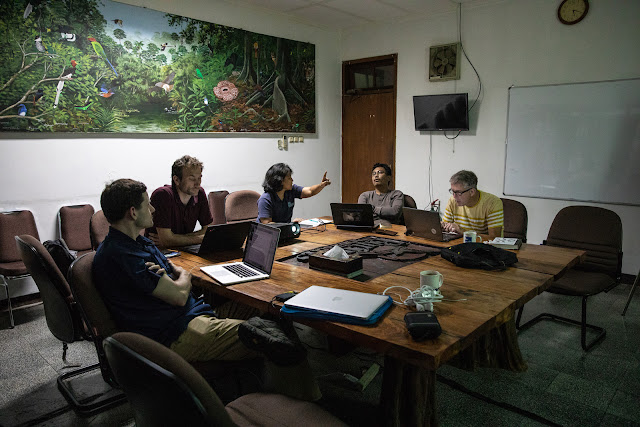A quick search for scientific literature on Britain’s five ‘native’ columbids was revealing. For various reasons, Columba livia returned a whacking 3778 papers, while Woodpigeon had 147 papers, Collared Dove 130 papers, and Turtle Dove 78 papers. It was no surprise that Stock Dove was in last place with just 21 papers mentioning it by name, and only five in which the self-effacing Columba oenas was anywhere close to centre stage in an ecological study.
 |
| Stock Dove Columba oenas (Photo: Chris Cant https://www.flickr.com/photos/81624096@N00/4290268363n) |
This Masters project (with Stu and Alex Lees) aims to map stock doves’ distribution in Manchester and then investigate the different environmental factors of this distribution. Basically what we will do is to find as many habitat patches which contain stock doves and compare the habitat and location characteristics of these with areas where they are not present. Underpinning this, a field survey will be done within the M60 ring road to identify as many locations with stock doves as possible.
 |
| Modelled distribution for stock doves within the M60 ring road |
The project draws heavily on Citizen Science data - historical data for the species from Manchester Birding forum and eBird has 448 sightings at 32 different sites. The current recorded locations of stock doves from MBF and eBird were used in a species distribution model to predict other suitable habitat in Manchester. The OS Greenspace map was used which designates land based on its usage, for example, playing fields, park, or cemetery. Environmental layers that contributed to the Maxent model came from OS open data, OS master map, DEFRA and the Forestry Commission. The ‘environmental’ layers used in this model were:
• OS Master map descriptive layers
• Size of OS land packet
• Proximity to water course
• Proximity to woodland
• Land management of site
From the output model areas of high likelihood of stock dove presence were identified by producing cells with a value based on the sum of all their neighbours. These cells were then put into groups and identified as predicted stock dove habitat.
 |
| Stock Dove pair in Birchfields Park, Manchester (Photo: Alex Lees) |
Choosing When to Survey
The predicted sites will be visited between March and May when there should be the highest chance of viewing/hearing stock doves. Looking at the historical data most stock dove sightings per proportion of all sightings were between March and July, whereas most overall sightings were in March and April.
The following new sites will all be visited during Spring 2019
* Broadoak Park
* Gorton Reservoirs
* Clayton Vale
* Salford Sports Village
* Highfield Country Park
* Broad EES Dole
* Platt Fields Park
* The Cliff/Kersal Dale
* LIVIA Silverdale
* Tom Husband Leisure Complex
* Buile Hill Park
* Northenden Golf Course
* Blackley Forest
* Didsbury Golf Course
* Philips Park, Clayton
* Fog Lane Park
* Wythenshawe Sports Ground
* Bolton Road Playing Fields
* Newton Heath
* Mersey between Wilmslow Road and Mersey Vale Nature Park
* LIVIA Forest Bank
* Broadhurst Park
* River Tame East of Reddish Vale
* Manchester Ship Canal near Trafford Centre
* Near Ashcroft Bridge over Irwell
* Gosjac A.C. Fishing Ponds near Mersey Vale Nature Reserve
* Birchfields Park
* LIVIA The Nursery
* Willow Grove Cemetery
* Queen's Park
* Chorlton-Cum-Hardy Golf Course
* Brookdale Golf Course
These sites will also be revisited as there are no recent recordings of stock doves:
* Ashton Moss
* Boggart Hole
* Weaste (Cemetery and WTW)
* Northern Cemetery
* Hough End Playing Fields
More about this project can be read here.


























